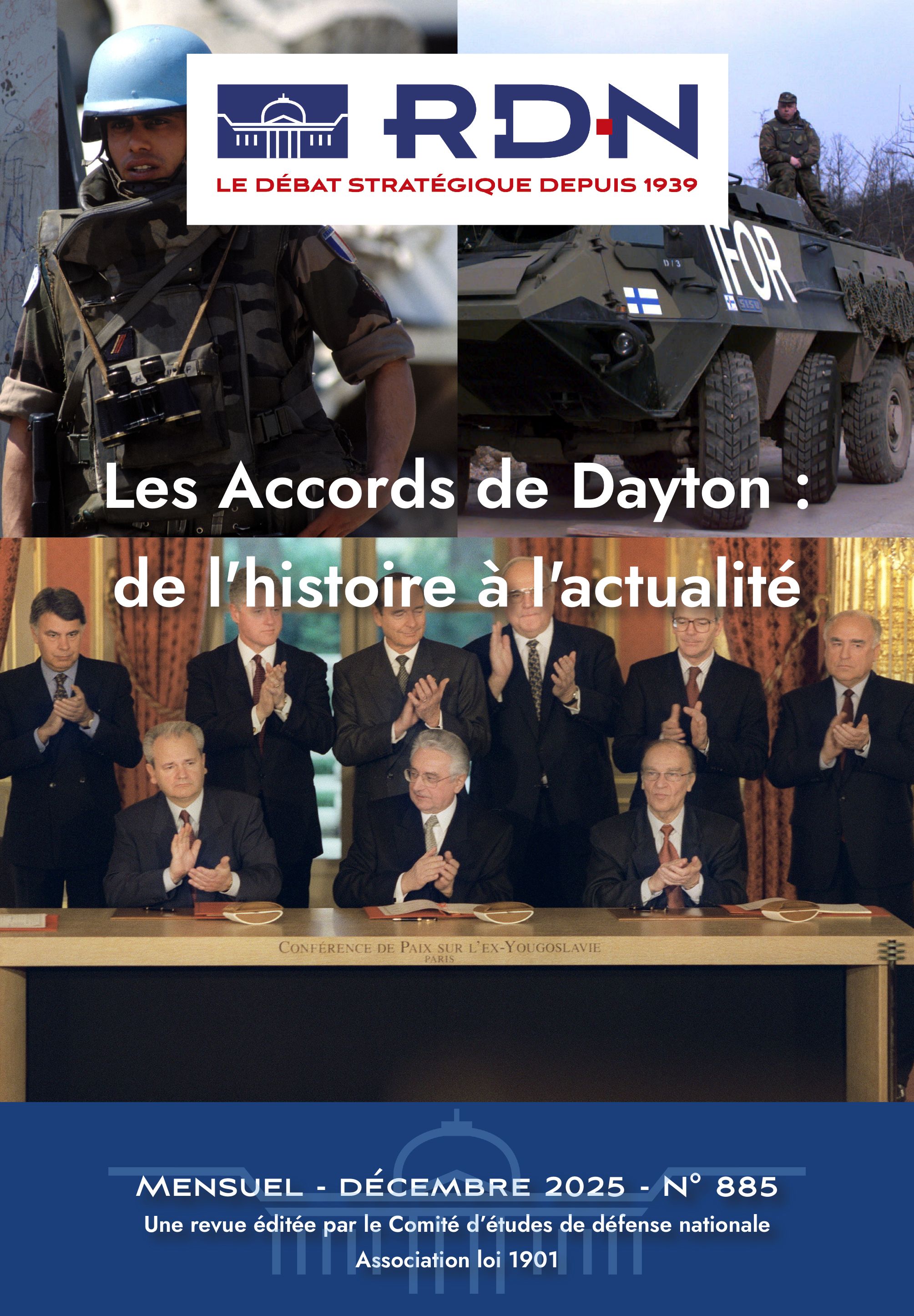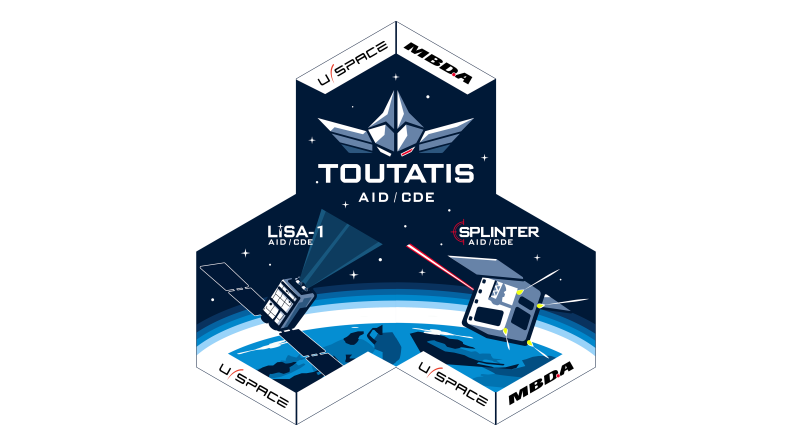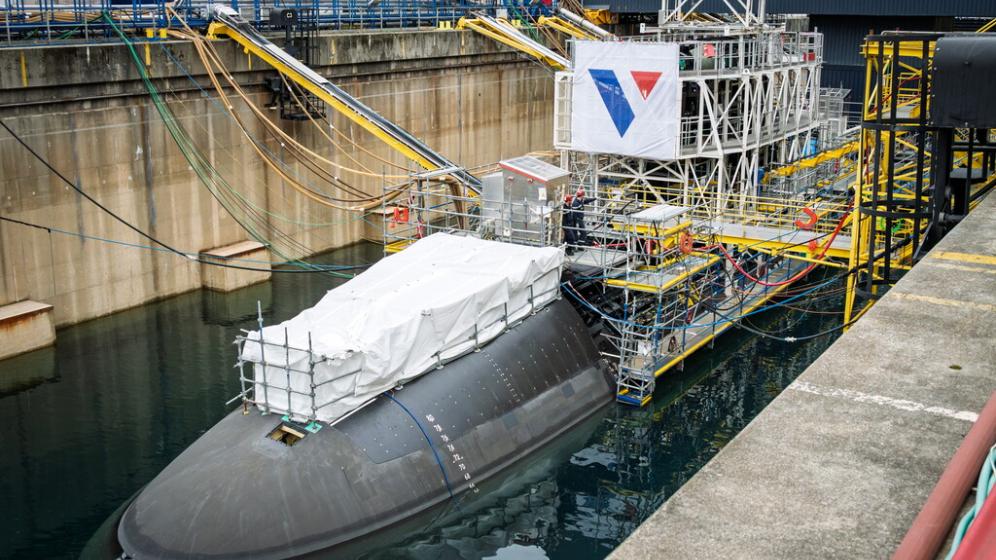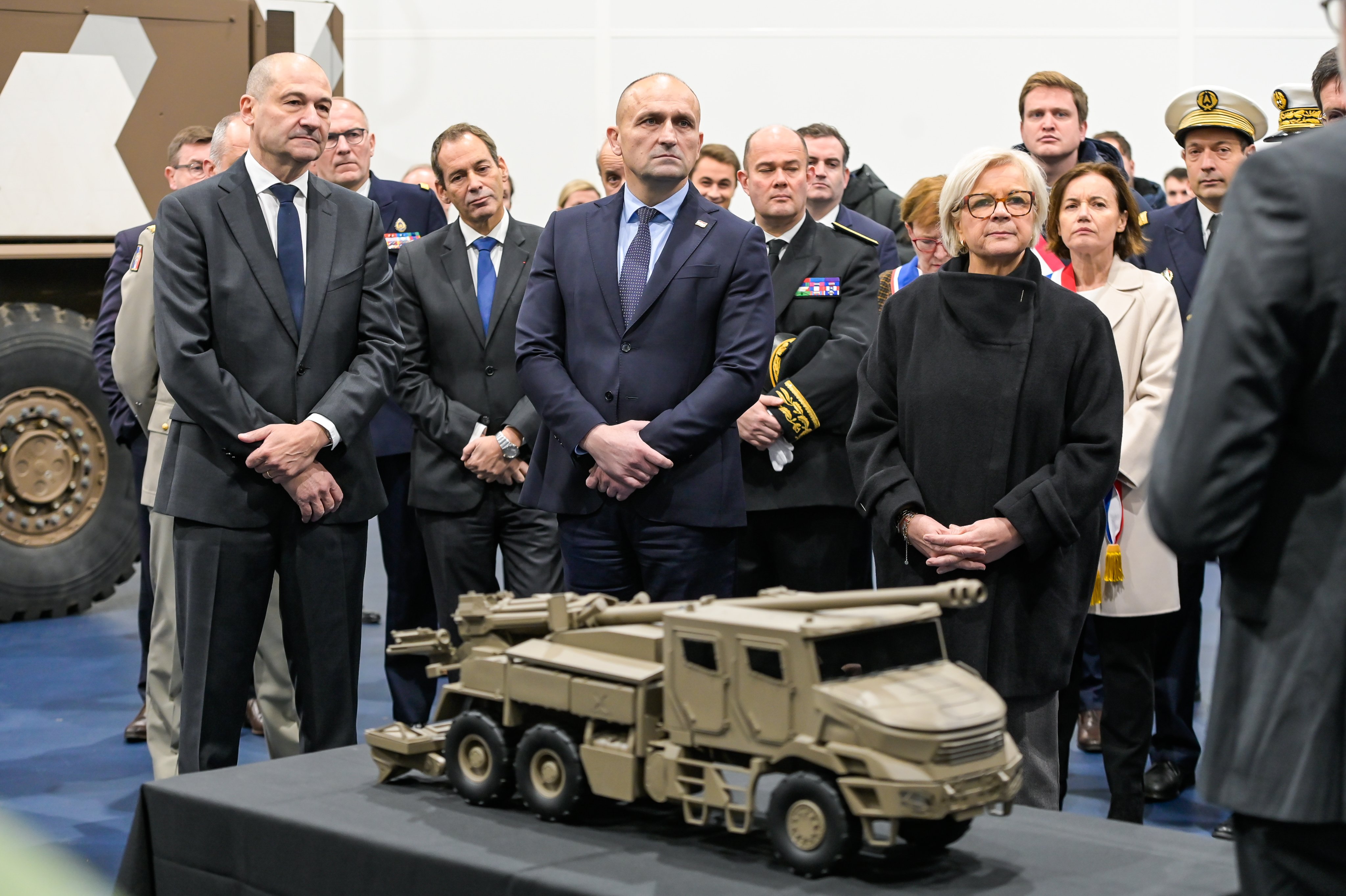Multi-domain operations (MDO) and the continuum of competition, contest and confrontation require the armed forces to reinforce the agility of their command and control (C2) systems in the integration their effectors in order to guarantee freedom of action and decisional superiority over adversary.
C2 of Multi Domain Operations (MDO): Imposing Complexity, Not Suffering From It
Context
Our operational space is composed of contiguous, overlapping or separate environments in which our adversaries challenge our superiority, something we can no longer count upon. Forces and actors of many forms and origins evolve within it from competition to challenge to confrontation, a sequence of development that invalidates the notion of peacetime. Our adversaries and competitors are organised into complex systems of systems and upset our perception of their structures through their now normal use of strategic surprise. Moreover, the doubt now being cast over the post-Second World War security structure built by the West relieves potential adversaries and competitors of any reticence they might have had as they move towards a policy of faits accomplis intended to catch us unaware.
The threats to our freedom of action are two-fold: on one hand, courses of actions aimed at circumventing our power through the spread of new-generation materiel, and on the other, the development of special capabilities. The aggressor makes use of all domains of conflict—the fields of EM and information, plus the land, sea, air, space and cyber environments—in attempting to exploit our weaknesses by imposing a rapid tempo and capitalising on our difficulty in grasping the complexity of our adversaries.
It is therefore up to us to penetrate their operational space and to define ways to take advantage of their weaknesses in order to achieve our objectives. Because the opportunities to make such a penetration are generally short-lived, we need to have as many options as possible, the ability to put them into action rapidly and hinder the adversary’s understanding of the situation in order to exploit the environment to our advantage. To achieve this it is vital to acquire and maintain our superiority in operational decision-making. Our freedom of choice, our ability to plan our operations by making best use of our assets in all or part of the five environments and two fields of multi-domain operations (MDO), more than ever represents the raison d’être of our Command and control (C2) system.(1)
A Picturesque Analogy
Imagine a judo contest in which our opponent is a well-trained giant of a man. If we do not have a single competitor of equivalent size, weight and skill we have to coordinate and bring to bear all our team members’ efforts in order to achieve our objective, which is to throw him to the ground.
This would mean one of our judokas grasping the opponent’s kimono at the shoulders while another pushes him at waist level and a third completes the throw with a foot sweep just as one of our supporters encourages the audience to applaud, thus influencing the referee and the watching journalists and sowing doubt in the opponent’s mind. What is more, all these actions have to happen at the very moment a ray of sun appears through a slit in the blackout curtains of the dojo and blinds the giant!
While this example might seem a little far-fetched, it symbolises the nature of multi-domain operations; on top of this, the trainer has to be master of all aspects of combat, influence, the weather—and more yet. The added advantage is that our athletes will be far less tired at the end of the competition and able to do the same again straight away, albeit perhaps in a different form.
Understanding the Environment
Any global operational space, and the forces at large within it, can only have any meaning if our comprehension of it encompasses all the domains of conflict that might be used by our opponents as well as by ourselves.
If faits accomplis, unpredictability and wrong-footing become normal, then perception, comprehension and anticipation will be our sole saving grace in preserving enough time to put our solutions into effect. To this end, the only way of remaining in contact with the operational space that now encompasses the entire world will be through permanent C2 structures established at all command levels, interacting seamlessly with our partners and allies. This structure will continuously assess the situation so that we can plan the combined responses that will be the bases of our operations, and set them in motion at a tempo that we will impose on our adversaries.
From that, we may deduce three things:
• Since the competition—challenge—confrontation sequence will occur before actual conflict, the C2 processes of intelligence, planning, conduct and assessment must function permanently; we will not have the time to build, arm and deploy ad hoc C2 structures once the crisis has developed.
• Since the operational space for MDO is now global, it harms the continuity and coherence of our operations if we continue to define operational areas in terms of geographical or, worse, environmental limits.
• Relationships between the various levels of command need to be reaffirmed; they have been blurred by three decades of low-intensity, low-tempo, essentially tactical and asymmetric operations. This division of responsibilities will lead to an overall strategic approach, strong operational integration and tactical delegation which in turn will allow us to achieve our aims with high levels of coherence, integration of operations in all fields of conflict and immediate exploitation of action on the ground.
Integrate Multi-Domain Activity: When?
Permanent integration
The range of threats has broadened and encompasses the pre-conflict period through to high intensity. This extension of the strategic framework increases the complexity and tempo of decision-making at the same time as the number of players in operations is increasing, so too the number of environments in, towards or from which the game is being played.
Crises once characterised by well-modelled phases of escalation and de-escalation are today evolving at an irregular rate which makes them difficult to predict and can give an impression of lack of coordination and focus in our adversaries’ actions. It is nothing of the sort—these actions are well-considered and therefore more numerous; apparently more rarefied so less easily understood; and conducted in a vast environment therefore appear less focused. But they are no less coherent or less aimed towards a well-defined strategy. We have to do the same, but better and faster.
In this context, our actions that were once conducted in parallel, sometimes synchronised, and conducted by traditional land, air and naval forces are no longer sufficient to act effectively when faced with adversaries who use all means at their disposal—legal or not. Only coordinated integration of all the effects produced in all fields of conflict will allow us to achieve our aims, to protect our vulnerabilities effectively and maximise our survivability. In addition, it will shape our ability to continue in the long term by creating the best cost/effectiveness ratio.
MDO Integration: Why?
Integrate to master time
Maintaining mastery of time is one of the challenges of MDO C2. It applies to long-term mastery of the coherence functions—monitoring, planning, simulation and wargaming—which define the type of war that we must wage, and to very short-term assessments for identifying and seizing every opportunity that arises from intelligence information, targeting and evaluation of effects to wage the war that we are able to wage. It will also be a function of its ability to take into account technological time, which is dictated by the means used to adapt ourselves to the war that will be waged. Technological time affects information handling, processing and dissemination, the transmission of orders and reports, and the computing time that goes with each.
Mastery of the long term depends on the ability of C2 to reproduce work processes systematically, so they can be shared and understood by all actors, whatever their environment or timescale of action. To this end, the vastly differing C2 tempos of each environment must be able to generate synchronisation points which allow the sharing of information useful to the conduct of operations at all levels of responsibility at rates adapted to the needs of each environment. This complex but essential, if sometimes counter-intuitive, mechanism allows us to control the clocks that create the connections needed to integrate the activities of the environments and the fields of conflict. It falls to the operational integrator to define priorities, based on allocation of assets and the aims to be achieved. This is the battle rhythm of MDO.
Mastery of the short term is at the level of each of the environmental C2 which, making use of shared knowledge of the environment and the ordered objectives, must be in a position to take the necessary tactical action to exploit the often fleeting windows of opportunity as quickly as possible. The principle of subsidiarity, or delegation, must now be added to this speed, adaptability and tactical creativity. Often mentioned, though rarely observed in its natural environment, subsidiarity is a founding principle of the operational decision-making process in an MDO environment, where the final decision is delegated to the most appropriate level to act upon it and to observe the results.
It appears on two levels:
• In the overall chain of command: integration of MDO effects must be achievable by C2 structures of any size, be they at the domain, operational or strategic level.
• In a domain C2: if needed, permission should be given for decisions to be taken by the tactical echelon on the ground regarding commitment to the conduct of an operation. This capability adds to the overall resilience of the C2 chain since it ensures the continuity of decision-making, should the central echelon suffer some form of breakdown.
Advancements in digitalisation represent an opportunity to put this double subsidiarity into effect, although they also present a risk to respect for, and separation of, the various levels of command, each of which has well-defined responsibilities. Moreover, digitalisation’s extremely rapid development imposes upon us its own tempo for our adaptation to, and acquisition of, the technology. We need to adopt better programme flexibility in this subject area. One path to explore would be to develop structures and policies of innovation that are closer to the users and operations.
Integrate for Surprise
Our doctrine is freely available on internet, and is therefore well known.(2) Our competitors and adversaries have studied it closely: we have become predictable. The linear chronology of suppression of enemy air defences (SEAD)-air superiority–attack C2 nodes–maritime superiority–ground offensive–stabilisation, and its implementation are taught in all our adversaries’ good staff colleges for them to establish their enemy’s concepts of operation. Under such conditions, regaining the advantage of the element of surprise is far from easy. The MDO approach to operations will allow it: it makes us less predictable and more difficult to counter, and complicates the adversary’s perception of the overall dimensions of the operational space we are going to employ against him while engaging parts of his systems of systems.
Nevertheless, if surprise is to be effective it has to be able to be produced by creating permanent uncertainty in the enemy’s mind. Integration cannot therefore be a one-shot weapon which mobilises the entire range of skills of a heavily-loaded C2 chain towards a sole objective. It must be continuous, incorporated as standard in both planning and conduct of operations. It is the result aimed for by all the processes that make C2 function. Such processes already exist and development of the MDO approach does not invalidate them. They bring to our operations the focus needed to apply the political intent within a defined strategic framework. In short, the C2 processes are the guarantee that we are waging the war that we should be waging, not that which we would like to wage! It is now up to us to connect them in order to act in a coordinated manner, and to accelerate them so we can impose them upon the enemy.
Integrate for Access
We can be denied access to the adversary’s operational space by means and activities which undermine our technological and operational superiority, now increasingly under attack. Whilst taking all the fields of conflict into account increases the complexity of our understanding of the space, it also increases our adversary’s areas of vulnerability—and he cannot protect all of them. We need to identify, exploit, and combine these vulnerabilities, in order to advance along the enemy’s lines of least resistance. By doing so we maximise the benefits of our action whilst reducing our exposure. We shift the risk/benefit ratio of our investment to our advantage by obtaining effects which serve our aims in finding solutions to enter and act within the enemy’s space.
In addition, the integration of effects produced by a wide variety of actors will by nature counter the lack of certain specialised capabilities or reduce the risks inherent in their use by casting aside the logic of one effect in one domain by one dedicated effector, and instead using the approach of an effect resulting from the combination of several effectors in several domains.
As an example, at high intensity, the acquisition, maintenance or re-establishment of air superiority—a pre-requisite for action in other environments—no longer comes down to the possession of an anti-radar missile and a sufficient number of air defence fighters. This approach proved extremely costly for a disappointing result during the first weeks of the Russia-Ukraine conflict. The inability of either side to impose its freedom of action in the air has led to immobility of land and naval forces on both sides and to irreversible attrition which no longer makes it possible to generate the force necessary to obtain it.
This superiority could have been achieved through a combination of effectors—airborne (EM intelligence), cyber (degradation of C2), spatial (intelligence and assessment), EM (offensive jamming), naval (engagement from the sea), information (deception) and land (ground engagement). The entire judo team at work again!
Integrate for Sustainability
High-intensity warfare is back: it is a reality. There is no need to focus on the Russia-Ukraine conflict to convince ourselves; we simply have to look at the manner in which worldwide defence budgets have evolved over the past 20 years. The amount of weaponry available in the world has never been greater since the end of the Cold War. National armed forces are restructuring after several decades of focusing on asymmetric adversaries with few assets. Those asymmetric enemies counted on atypical courses of action and on exploitation of our weaknesses to compensate for their technological and operational disadvantages. Those operations required few resources and reduced the intensity, hence the impact, of our own modes of combat.
The consumption of resources in high-intensity combat makes our sustainability a matter of prime concern. That being so, creating courses of action that allow us to achieve our aims at lower cost while minimising exposure of our assets and personnel becomes a necessity. Though not the only reason why we are adopting the MDO approach to operations, such optimisation of use of assets is nevertheless a major benefit.
M2MC Integration: What With?
Mastering the complexity of the operational environment and the action taking place there might seem contradictory to the acceleration of the decision-making tempo we wish to impose upon the adversary. As far as C2 is concerned, the key lies in the intellectual process set in motion in response to a given problem. It allows identification of the elements that will allow the problem to be resolved—understanding the scope(3) of the problem and what appropriate levers are available to respond to it. In particular, it guarantees that the actions decided upon and put into effect converge towards a single aim: achieving the desired end state derived from the political intent within a defined strategic framework. This process must be unbiased and permanent, whatever the question posed. Applied to MDO, it means having standardised thought processes shared by all concerned which are able to determine the best possible combination of the seven keys on the MDO keyboard even if all seven of those domains are not necessarily called for in every response. The next question, of course, concerns where the MDO integration process should sit. Since it applies to all the domains of conflict, this integration has to be overarching and incorporate all levels of command of operations, yet with primacy afforded to the operational level in terms of planning and assessment. Created originally to coordinate effects between the environments of the traditional force components—land, sea and air—it is perfectly suited to the same function with a greater number of actors.
Under these conditions, one might legitimately ask what has changed? The change lies in the fact that this operational mechanism has now to be used permanently by the entire C2 structure, from the strategic to the tactical level. The delegation essential to the MDO approach to operations involves understanding and use of operational integration mechanisms down to the lowest level of the command chain. Maintaining coherence in operations, synchronising effects, and setting or altering priorities during operations conducted collectively by effectors in several domains and responsible to different C2 chains requires a domain-coordinating C2 which acts on the intentions of the planning-level C2 and is responsible for incorporating the action of each environment. Such a structure already exists, known as the ‘beneficial support relationship’ (in French, Relation bénéficiaire en appui—RBEA). Until now it has been applied to a complete phase of a joint operation that might last days or weeks. We now need to apply the same logic to a much higher tempo which could lead to some redistribution of roles and responsibilities between tactical C2 organisations in the course of any given day.
Key Resources
This dynamic allocation of responsibilities for MDO action to one tactical C2 organisation or another requires compatible and connected processes which use and generate data that is made available to all the C2s involved.
To that end, two major resource pools need to be made available to all actors:
• Digitised C2 networks for connected combat, which will be central to the MDO approach to operations and their command and control. This is an ambitious and essential step, since it sits at the junction of three main routes—materiel, interfaces and a renewed policy of data management.
• The performance and resilience of C2 structures which make extensive use of digital resources will be based on the availability of personnel fully acquainted with all the processes of planning, conduct and assessment of operations at the tactical and operational levels. Our digital systems are under permanent threat from adversaries whose hybrid activities make extensive use of cybernetics. Only perfect understanding of the fundamental workings of C2 will ensure the vital capability to continue operations in a fallback mode.
(1) Translator’s note: the use throughout of terminology such as domain, field, environment and integration is intended to reflect French use in the context of MDO (in French, Multi-milieux multi-champs—M2MC) and may not correspond exactly to that which might be employed in a similar English language context. For an explanation of French use of this terminology, see Part 1, page 17, of: https://www.defense.gouv.fr/.
(2) Editor’s note: CICDE, Architecture de la doctrine interarmées française (DIA), (Architecture of French joint forces doctrine) January 2023 (https://www.defense.gouv.fr/).
(3) To simplify the article, the notion of scope here is deliberately broad and all-encompassing, and includes understanding of the question asked, the factors of power, the actors concerned, constraints, restrictions, dangers and so on.







